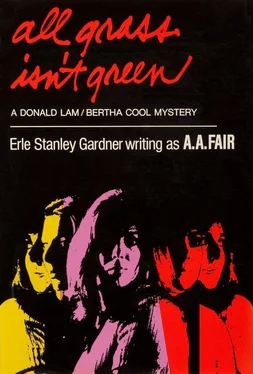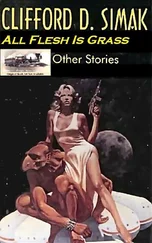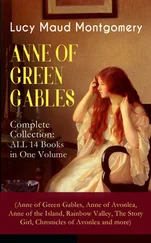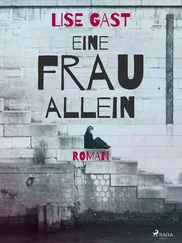A. Fair - All Grass Isn't Green
Здесь есть возможность читать онлайн «A. Fair - All Grass Isn't Green» весь текст электронной книги совершенно бесплатно (целиком полную версию без сокращений). В некоторых случаях можно слушать аудио, скачать через торрент в формате fb2 и присутствует краткое содержание. Город: New York, Год выпуска: 1970, ISBN: 1970, Издательство: William Morrow, Жанр: Детектив, на английском языке. Описание произведения, (предисловие) а так же отзывы посетителей доступны на портале библиотеки ЛибКат.
- Название:All Grass Isn't Green
- Автор:
- Издательство:William Morrow
- Жанр:
- Год:1970
- Город:New York
- ISBN:978-9997511973
- Рейтинг книги:4 / 5. Голосов: 1
-
Избранное:Добавить в избранное
- Отзывы:
-
Ваша оценка:
- 80
- 1
- 2
- 3
- 4
- 5
All Grass Isn't Green: краткое содержание, описание и аннотация
Предлагаем к чтению аннотацию, описание, краткое содержание или предисловие (зависит от того, что написал сам автор книги «All Grass Isn't Green»). Если вы не нашли необходимую информацию о книге — напишите в комментариях, мы постараемся отыскать её.
The reason? Calhoun just wanted to talk to Hale.
The search begins in the novelist’s pad and leads to a beautiful woman named Nanncie, who in turn leads to Mexico, marijuana and murder.
As the plot thickens and twists, it forms a rope that nearly lands around Calhoun’s neck.
All Grass Isn't Green — читать онлайн бесплатно полную книгу (весь текст) целиком
Ниже представлен текст книги, разбитый по страницам. Система сохранения места последней прочитанной страницы, позволяет с удобством читать онлайн бесплатно книгу «All Grass Isn't Green», без необходимости каждый раз заново искать на чём Вы остановились. Поставьте закладку, и сможете в любой момент перейти на страницу, на которой закончили чтение.
Интервал:
Закладка:
Roberts called the county surveyor to the stand to introduce the diagram he had made showing a section of the road between Calexico and Imperial.
There were no questions on cross-examination.
Roberts introduced the testimony of a Calexico officer who was on patrol duty on the night of the tenth and the morning of the twentieth. He had no the pickup with the houseboat trailer parked at a space in the road very near the northern boundary of city limits of Calexico. He had seen it earlier in the evening of the nineteenth and he saw it shortly after midnight on the morning of the twentieth. He decided to leave occupant of the houseboat alone until morning and waken him to tell him that there were laws against camping there by the roadside and that, while he didn’t want to be arbitrary, he would have to insist that the occupant move on.
The officer had knocked on the door repeatedly. There was no answer, so he tried the handle of the door. The door was unlocked. He opened the door and looked inside and saw a body sprawled upon the floor.
He came to the conclusion that the man had been shot. He immediately backed away and closed the door, careful as he closed the door not to leave any fingerprints.
He had then radioed headquarters and they had out a team of investigators and had notified the sheriff in El Centro, who had sent deputies.
The officers had moved the pickup and houseboat to police headquarters at Calexico where there were facilities for a scientific investigation.
An expert fingerprint man from the Sheriff’s Office had taken over and, within a short time, Sergeant Frank Sellers, an expert in homicide from the Los Angeles Police, who was frequently engaged in liaison work in outlying communities, had joined forces with the other officers.
Newberry said shortly, “No questions on cross-examination.”
An officer identified on the diagram, which had already been introduced, the place where the pickup and trailer had been located just within the city limits.
Again there was no cross-examination.
A Sheriff’s Office fingerprint expert was called to the stand. He testified to painstakingly powdering the inside as well as the outside of the pickup and houseboat, searching for fingerprints.
Had he found any?
Indeed he had. He had found many latents that were smudged. He had found some seventy-five latents that couldn’t be identified and he had found some latents that could be identified.
“The latents that could be identified,” Roberts asked, “where did you find them?”
“I found five prints of a left hand that had been placed against the aluminum side of the houseboat, just to the left of the door handle. One of the fingerprints, presumably the thumb print, was smudged. The other four latents were identifiable.”
“Do you have photographs of the fingerprints?”
“I do.”
“Will you produce those photographs, please?”
The witness produced the photographs.
“Now then, you say that those were identifiable. Have you identified those four fingerprints that were clear and unsmudged?”
“I have.”
“Whose fingerprints are they?”
“The fingerprints of Milton Carling Calhoun, the defendant in this case.”
There was a startled gasp from the spectators, Newberry’s eyes were blinking several times to the second, but his face was a wooden poker face.
Calhoun was the one who showed emotion. He should incredulous and then chagrined.
This time Newberry made a perfunctory cross-examination.
“You don’t know when those fingerprints were made,” he said.
“No, sir, I do not. All I know is that they were made at some time before I was called on to go over houseboat for fingerprints, and that was on the morning of the twentieth.”
Was the expert absolutely certain these were fingerprints of the defendant?
“Absolutely.”
“Each print? Or was it the cumulative effect of several prints?”
“No, sir,” the expert said. He had identified each every fingerprint. There had been enough points of similarity in each fingerprint to make an identification positive.
Newberry let the guy go.
A medical examiner summoned by the Sheriff’s Office testified that he had journeyed with the county coroner to Calexico; that the body had been observed m place the floor of the houseboat; that then the body had been removed to the mortuary and there had been a post mortem. Death had been caused by a .38-caliber bull which had penetrated the chest, severed a part of heart, and lodged near the spine on the right-hand side the body, traversing the chest at an angle. The bullet had been recovered. Death had been at some time between 9 o’clock at night on the nineteenth and 3 o’clock in the morning on the twentieth.
Newberry’s cross-examination was perfunctory.
How had the time of death been established? The answer was that the witness had used body temperature and the development of rigor mortis and of post-mortem lividity, had taken into consideration the outer temperature that night, estimated the temperature inside the houseboat, etc.
“What about the stomach contents?” Newberry asked. “Had not the contents of the stomach given a definite idea as to how long after the last meal had been ingested before death occurred?
“The stomach contents would be of no help,” the physician said. “The last meal had been ingested quite a few hours prior to death.”
I passed a note to Newberry. “Find out about conditions in the houseboat,” I said. “Was an electric light on at the time the body was discovered? Was there a gas stove which had been used and which would have changed the temperature in the houseboat and thereby thrown off the calculation of the time of death? And ask if it isn’t a fact that rigor mortis develops sometimes very slowly and at times almost immediately, particularly if death occurs during the height of an argument or quarrel which has raised the blood pressure.”
Newberry read the note thoughtfully, crumpled it, tossed it into the wastebasket, and said to the witness, “No further questions on cross-examination.”
The witness left the stand.
The prosecution introduced a certified copy of the State Firearms Records showing that Milton Carling Calhoun had purchased a certain Smith & Wesson .38-caliber revolver with a one-and-seven-eighths-inch barrel, number 133347, the cylinder of which held only five shells. The weapon had been purchased from the Sierra Sporting Company m March three years earlier.
A photo static copy of the record was introduced showing the signature of Milton C. Calhoun and address. [1] For the purposes of evidence a certified copy of the firearms register is introduced, but for the purpose of identifying the signature of Calhoun it requires a photo static copy of the original record. A certified copy only shows the contents of the original certificate. To show the signature on the certificate a photostat required. E.S.G.
Roberts said, “I am going to call Sergeant Frank Sellers, of the Los Angeles Police, to the stand.”
Sellers took the oath with the bored manner of who had testified thousands of times.
The prosecutor asked questions showing Sellers’ professional qualifications and the fact that he was in Calexico on the morning of the twentieth.
“What brought you to Calexico?” Roberts asked.
“Our department was asked by the chief of police Calexico to furnish some technical assistance in connection with a matter—”
“Just a minute,” Newberry interrupted. “Unless the matter is connected with the present case, I object to it as incompetent, irrelevant and immaterial.”
“It is indirectly connected,” Roberts said, “but we withdraw the question.”
Newberry smiled as though he had actually accomplished something besides keeping me from getting some information I would have liked to have had.
Читать дальшеИнтервал:
Закладка:
Похожие книги на «All Grass Isn't Green»
Представляем Вашему вниманию похожие книги на «All Grass Isn't Green» списком для выбора. Мы отобрали схожую по названию и смыслу литературу в надежде предоставить читателям больше вариантов отыскать новые, интересные, ещё непрочитанные произведения.
Обсуждение, отзывы о книге «All Grass Isn't Green» и просто собственные мнения читателей. Оставьте ваши комментарии, напишите, что Вы думаете о произведении, его смысле или главных героях. Укажите что конкретно понравилось, а что нет, и почему Вы так считаете.












